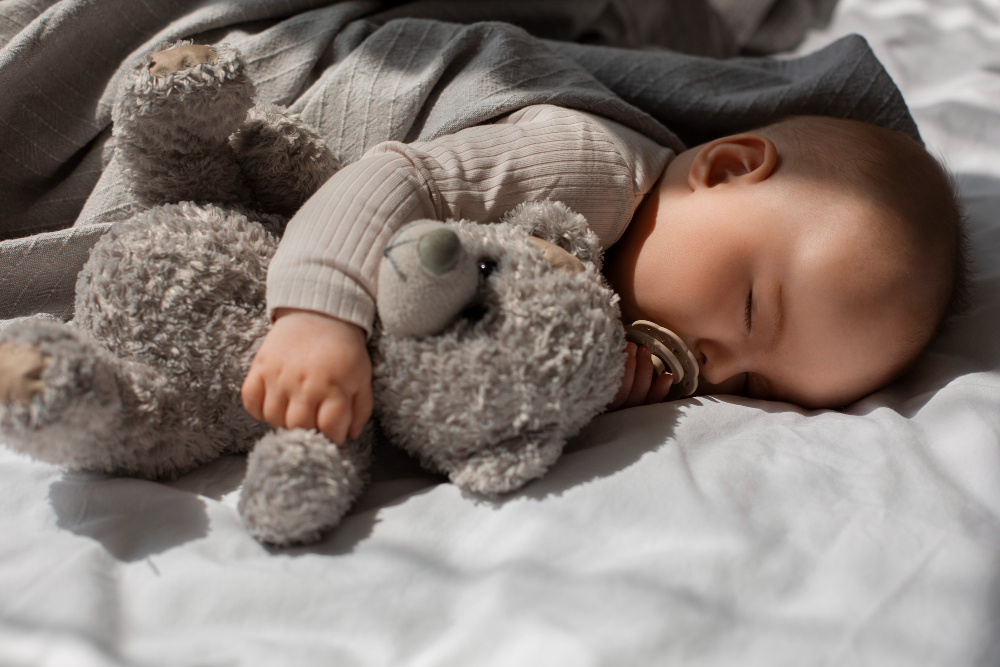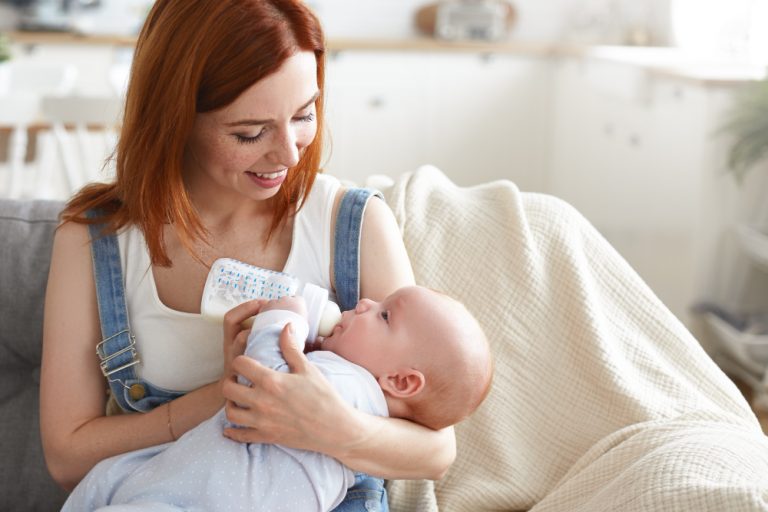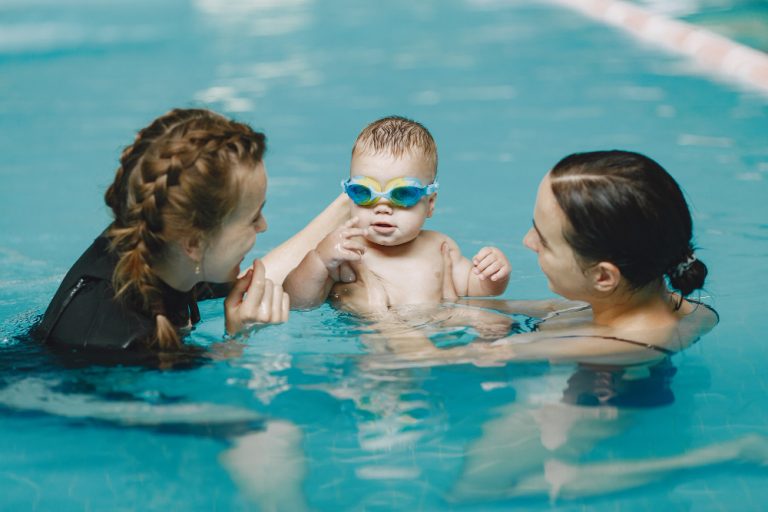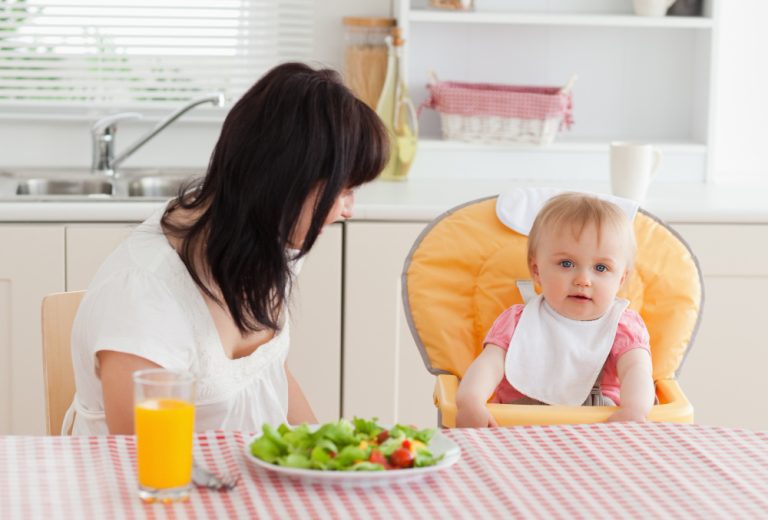When Can Babies Self-Soothe To Sleep? Self-Soothing in Baby
Do you remember the last time you had a good night’s sleep? If you’re a new parent struggling to get some shut-eye, you’re not alone. Are you constantly waking up in the middle of the night to soothe your crying baby? Are you feeling exhausted, overwhelmed, and at your wits’ end about when can babies self-soothe to sleep?
If you answered yes to any of these questions, then you know how challenging it can be to care for a baby who struggles to self-soothe. But don’t worry, there’s hope!
In this blog, “When Can Babies Self-Soothe To Sleep?” we delve into actionable tips and techniques designed to prevent sleep concerns in babies aged 0 to 6 months. From establishing a soothing bedtime routine to incorporating white noise benefits, we’ll equip you with the knowledge needed to navigate your infant’s sleep-wake patterns effectively.
Join us as we explore the importance of self-soothing for babies and uncover practical strategies for enabling a more peaceful and restful environment for your child.
Introduction to Self-Soothing Techniques for Babies

Babies have a natural ability to self-soothe, which plays a crucial role in developing healthy sleep patterns.
Self-soothing refers to the skills and techniques that babies learn to calm themselves and find comfort. It ultimately leads to better sleep quality for both the baby and the parents.
- By allowing babies to self-soothe, they become more independent sleepers and are better equipped to transition between sleep cycles, reducing nighttime awakenings.
- This not only promotes restful sleep but also helps babies develop self-regulation skills that are essential for their overall well-being.
- Self-soothing techniques can range from the use of security objects like stuffed animals or blankets to creating a calming sleep environment with the help of white noise machines.
- Establishing a consistent bedtime routine and ensuring that all of the baby’s needs are met before they become overtired are also crucial in supporting self-soothing.
- When babies are able to self-soothe, they feel secure and comfortable, fostering their emotional development.
- As they grow older, these self-soothing skills become essential lifelong tools for managing stress and promoting healthy sleep-wake rhythms.
In the following sections, we will explore various self-soothing techniques and strategies that can help babies develop healthy sleep habits. This will help us understand the intricacies of when can babies self-soothe to sleep.
By understanding the importance of self-soothing and implementing effective techniques, both parents and babies can experience more peaceful and restful nights.
Mastering the Timing for Self-Soothing

Timing plays a crucial role in teaching babies to self-soothe. By understanding when to introduce self-soothing activities, parents can effectively support their baby’s journey towards developing healthy sleep habits.
Here are some strategies for mastering the timing of self-soothing:
1. Observe Sleep Cues
- Babies exhibit certain cues when they are ready to sleep or are becoming overtired.
- Look out for signs like rubbing their eyes, yawning, or becoming fussy.
- These cues indicate that it’s time to start the self-soothing process and help your baby settle into sleep.
2. Choose the Calm Phase
- Babies have different phases of activity throughout the day.
- Look for a calm phase when your baby is not overly stimulated or tired.
- This is the ideal time to introduce self-soothing techniques as they are more receptive and relaxed.
3. Gradual Transition
- Start with short periods of self-soothing during the day to allow your baby to become familiar with the process.
- As they become comfortable, gradually incorporate self-soothing into nap times and bedtime routines.
- This approach helps your baby develop a positive association with self-soothing techniques.
4. Consider Your Baby’s Age and Development
- The age and developmental stage of your baby can impact their readiness for self-soothing.
- While newborns may need more assistance, older babies may be more independent when it comes to self-soothing.
- Adjust your approach based on your baby’s abilities and explore techniques suitable for their age.
5. Be Patient and Responsive
- Remember that self-soothing is a skill that takes time to develop.
- Be patient with your baby’s progress and provide them with comfort and reassurance when needed.
- Respond promptly to their cues and offer gentle guidance as they learn to soothe themselves.
6. Personalize the Timing
- Every baby is unique, and what works for one may not work for another.
- Pay attention to your baby’s individual needs and preferences.
- Personalize the timing of self-soothing activities based on their temperament, sleep patterns, and comfort levels.
By mastering the timing of self-soothing, you can set your baby up for success in developing healthy sleep habits. Remember to be attuned to your baby’s cues and adjust your approach accordingly for a smoother transition towards independent sleep.
Creating a Bedtime Routine for Self-Soothing

Establishing a consistent bedtime routine is crucial for promoting self-soothing in babies. A soothing routine helps signal to your little one that it’s time to wind down and prepare for sleep. By implementing a bedtime routine, you can create a calm and predictable environment that encourages self-soothing behaviors.
Here are some suggestions for establishing an effective bedtime routine for your baby:
1. Set a fixed schedule
- Setting a regular bedtime and wake-up time helps regulate your baby’s internal clock and supports the development of healthy sleep patterns.
- Consistency is key, so try to stick to the same schedule each day.
2. Create a quiet and calm atmosphere
- Before bedtime, create a peaceful environment by dimming the lights and minimizing noise and stimulation.
- This helps create a soothing atmosphere and prepares your baby for sleep.
3. Incorporate soothing activities
- Include activities in the bedtime routine that promote relaxation and comfort.
- This could include a warm bath, gentle massage, or quiet reading time.
- These activities can help your baby transition from wakefulness to sleepiness.
4. Use a transitional object or security item
- Introducing a special blanket, stuffed animal, or other comforting object can provide your baby with a sense of security and familiarity.
- This can help them self-soothe when they wake up in the middle of the night.
5. Dim the lights
- As bedtime approaches, gradually dim the lights in your baby’s room.
- This signals to their body that it’s time to sleep and helps create a calming environment.
6. Stick to the routine
- Consistency is essential in a bedtime routine.
- Once you establish a routine that works for your baby, try to follow it consistently every night.
- This predictability helps your baby understand what to expect and encourages self-soothing.
Remember, every baby is unique, so feel free to adapt the bedtime routine to fit your baby’s needs. By creating a consistent and soothing routine, you can help your baby develop self-soothing skills and establish healthy sleep habits.
Supporting Self-Soothing with Security Objects

Babies often find comfort and solace in the presence of security objects. These objects play a crucial role in helping them self-soothe and establish a sense of security and familiarity. By providing a familiar item, you can help your baby navigate through challenging moments and promote healthy sleep habits.
Here are some recommendations for suitable security objects to offer:
1. Comforting Blankets or Loveys
- Soft blankets or loveys can provide a comforting sensory experience for babies.
- Choose a blanket or lovey made from breathable fabric, such as cotton, and ensure it is small enough for your baby to manage safely.
- Avoid attaching any loose or small parts that could pose a choking hazard.
2. Stuffed Animals
- Stuffed animals can be great companions for babies.
- Look for ones that are made with hypoallergenic materials and have safety features like securely stitched eyes and no removable parts.
- Introduce the stuffed animal during calming activities and gradually encourage your baby to interact with it as a self-soothing tool.
3. Soft Music or White Noise Machines
- Music or white noise can create a soothing and consistent sound environment for your baby.
- Use a portable white noise machine or a gentle lullaby-playing device placed at a safe distance from the crib.
- Opt for low-volume, continuous sounds that mimic the womb environment and promote relaxation.
4. Familiar Scented Objects
- Babies have a strong sense of smell, and familiar scents can be reassuring for them.
- Consider introducing a small item, such as a cloth or small pillow, that carries a gentle scent associated with you or a calming environment.
- This can help create a sense of security and promote self-soothing.
5. Safe and Secure Swaddling
- Swaddling can provide a sense of comfort and security to newborns.
- Use a swaddle blanket made of breathable fabric, following safe swaddling techniques to prevent overheating or restricted movement.
- Swaddling can create a womb-like environment, helping babies feel calm and secure.
Remember, it’s essential to regularly check security objects for any signs of wear and tear or potential hazards. Always supervise your baby when they have a security object, especially if it contains small parts. By offering suitable security objects, you can support your baby in their self-soothing journey and promote healthy sleep habits.
Creating a Calm Sleep Environment

It’s crucial to create a calm and conducive sleep environment to help your baby self-soothe and find calm during sleep. A peaceful sleep environment can significantly enhance your baby’s ability to relax and soothe themselves.
Here are some tips for achieving an optimal sleep environment:
1. Optimal Darkness
- Ensure that the room where your baby sleeps is dimly lit or dark.
- Use blackout curtains or blinds to minimize any outside light that may disturb their sleep.
- Darkness signals to the brain that it’s time to sleep and can help your baby feel secure and calm.
2. Maintain a Cool Temperature
- Keep the sleep space comfortably cool to prevent your baby from feeling too hot or overheated during sleep.
- Experts recommend a temperature between 68-72°F (20-22°C) for optimal sleep conditions.
- Additionally, dress your baby in breathable sleepwear to promote comfort.
3. White Noise
- Using white noise can help drown out background sounds and create a soothing atmosphere for your baby.
- Consider using a white noise machine or a simple fan to provide a steady and consistent sound that can help your baby relax and fall asleep.
4. Comfortable Bedding
- Ensure that your baby’s crib or sleep space has a firm and comfortable mattress.
- Use fitted sheets that fit tightly to avoid any potential hazards.
- Avoid the use of pillows, stuffed animals, or loose bedding in the crib, as these can pose risks to your baby’s safety.
5. Gentle Music or Lullabies
- Soft and calming music or lullabies can help create a soothing ambiance for your baby.
- Consider playing gentle tunes or using a white noise machine that offers different sound options, such as calming nature sounds or soothing melodies.
Remember, creating a calm sleep environment is just one piece of the puzzle in helping your baby develop healthy sleep habits and the ability to self-soothe. Combine this with other effective techniques, such as establishing a consistent bedtime routine and appropriately timing self-soothing activities, to ensure your baby’s sleep experience is as restful as possible.
Establishing Regular Sleeping Times

One of the key factors in helping babies develop self-soothing skills is establishing regular sleeping times. Having consistent sleep schedules not only promotes healthy sleep patterns but also makes it easier for babies to self-soothe and fall asleep on their own.
When babies have a predictable routine, their bodies and minds become accustomed to the timing of sleep. This helps regulate their internal sleep-wake cycles, making it easier for them to settle down and self-soothe when it’s time to sleep.
Here are some tips for establishing regular sleeping times for your baby:
1. Set a Consistent Bedtime
- Choose a specific time for your baby’s bedtime and stick to it as closely as possible.
- Consistency is key to establishing a regular sleep routine.
- Aim for a time that allows your baby to get an adequate amount of sleep based on their age.
2. Wake Up at the Same Time Every Morning
- Try to wake your baby up at the same time each morning to help regulate their body clock.
- This helps set the rhythm for the entire day, leading to more regular sleep patterns.
3. Be Mindful of Nap Times
- Ensure that your baby’s nap times are consistent and follow a schedule.
- Over time, this will help synchronize their sleep-wake cycles and promote self-soothing during nap times as well.
4. Create a Calm and Relaxing Bedtime Routine
- Establish a soothing bedtime routine that signals to your baby that it’s time to wind down and prepare for sleep.
- This can include activities such as a warm bath, gentle lullabies, and dimming the room’s lights.
5. Provide a Sleep-Friendly Environment
- Create a sleep environment that is conducive to self-soothing.
- Keep the room cool, dark, and quiet.
- Consider using white noise machines or a steady sound to drown out distractions and promote relaxation.
By following these tips and establishing regular sleeping times, you can help your baby develop a healthy sleep routine and foster their ability to self-soothe. Remember, consistency and patience are key when it comes to teaching babies to self-soothe and find calm during sleep times.
Transitioning from Feeding to Self-Soothing

Transitioning from feeding to self-soothing is a significant milestone in a baby’s sleep journey. As babies grow and develop, it becomes important to gradually reduce their reliance on feeding for sleep and help them learn self-soothing techniques.
Here are some strategies to support this transition:
1. Establish a Consistent Bedtime Routine
- A consistent bedtime routine provides a comforting and predictable environment for your baby.
- Incorporate soothing activities like bath time, gentle massage, and lullabies.
- This routine helps your baby associate these calming activities with sleep, reducing the need for feeding as a sleep cue.
2. Introduce a Transitional Object
- Introducing a soft and comforting object, such as a stuffed animal or blanket, can provide your baby with a sense of security.
- Encourage your little one to hold and cuddle the object during sleep times.
- This can gradually replace the association of feeding with comfort and help them self-soothe.
3. Offer Comfort and Presence
- When your baby wakes up during the night, offer comfort and reassurance without immediately resorting to feeding.
- Patting their back, gently rocking, or softly singing can provide a soothing presence.
- This way, your baby learns to seek comfort from your presence rather than relying solely on feeding.
4. Gradually Reduce Nighttime Feedings
- If your baby is still reliant on nighttime feedings, gradually reduce the frequency and duration.
- Start by offering smaller feeds or slightly adjusting feeding times.
- This gradual approach helps your baby learn to self-soothe and gradually extend their sleep duration.
5. Practice Responsive Feeding
- During the day, focus on responsive feeding, ensuring your baby is well-fed and content before sleep times.
- This can help address hunger and prevent excessive reliance on feeding as a sleep crutch.
Remember, the transition from feeding to self-soothing takes time and patience. Each baby is unique, so it’s important to observe their cues and adapt strategies accordingly. By gradually reducing reliance on feeding and introducing other soothing techniques, you can help your baby develop independent sleep habits and self-soothing skills.
Meeting All Needs Before Tiredness Sets In

Babies have various needs throughout the day, and addressing these needs before they become overtired is crucial for their well-being and ability to self-soothe.
When a baby becomes overly tired, they may have difficulty settling down and finding comfort, leading to sleep disturbances and fussiness. By proactively meeting their needs, you can create a calm and conducive environment for self-soothing.
Here are some tips for ensuring all of a baby’s needs are met before tiredness sets in:
1. Feeding
- Make sure to feed your baby on demand or according to their feeding schedule.
- Hunger can make it challenging for babies to fall asleep and self-soothe.
- Ensuring they are well-fed before bedtime or naptime can promote a more restful sleep.
2. Diaper Change
- Regularly check and change your baby’s diaper to keep them clean and comfortable.
- A wet or soiled diaper can be a source of discomfort and hinder their ability to fall asleep.
3. Burping
- If your baby has recently been fed, take the time to burp them properly.
- Trapped gas can cause discomfort and make it harder for them to settle down.
4. Comfort and Security
- Swaddling or offering a comforting object, such as a soft blanket or a favorite stuffed animal, can provide your baby with a sense of security.
- These familiar items can help them feel safe and promote self-soothing.
5. Temperature and Environment
- Ensure the room is at a comfortable temperature and create a soothing sleep environment.
- Dim the lights, play calming white noise, and consider using a sleep sack to keep your baby cozy and secure.
6. Emotional Support
- Give your baby emotional support by responding promptly to their cries and providing gentle reassurance.
- Offer soothing words, gentle touches, and cuddles to help them feel nurtured and loved.
By prioritizing and fulfilling your baby’s needs before they become overtired, you can help them establish a sense of calm and learn to self-soothe more effectively. Remember, each baby is unique, so observe their cues and adjust your approach accordingly.
Creating a nurturing environment that addresses their needs sets the foundation for healthy sleep patterns and promotes self-soothing abilities.
Acknowledging Baby in the Crib

When it comes to helping your baby learn self-soothing techniques, acknowledging and comforting them in the crib without immediately picking them up can play a crucial role. By allowing babies the opportunity to self-soothe, you are encouraging them to develop independence and establish healthy sleep habits.
Here are some techniques to try:
1. Gentle Touch
- Instead of picking up your baby right away, try gently patting or stroking them in the crib.
- This provides reassurance and comfort while allowing them to practice self-soothing.
2. Soothing Voice
- Speak softly and soothingly to your baby from a distance.
- Your voice can provide a sense of security and familiarity, even if you’re not physically holding them.
3. Comforting Presence
- Sit or stand near the crib, making sure your baby can see and hear you.
- Your presence can offer a sense of comfort and reassurance as they navigate the process of self-soothing.
4. Transitional Objects
- Introduce a soft blanket or favorite stuffed animal that your baby can cuddle with in the crib.
- These security objects can provide a sense of comfort and familiarity, helping them feel safe while learning to self-soothe.
Remember, the goal is to acknowledge and support your baby in the crib without immediately resorting to picking them up. This allows them the opportunity to develop self-soothing skills, promoting independence and better sleep patterns.
Safe Sleep Habits
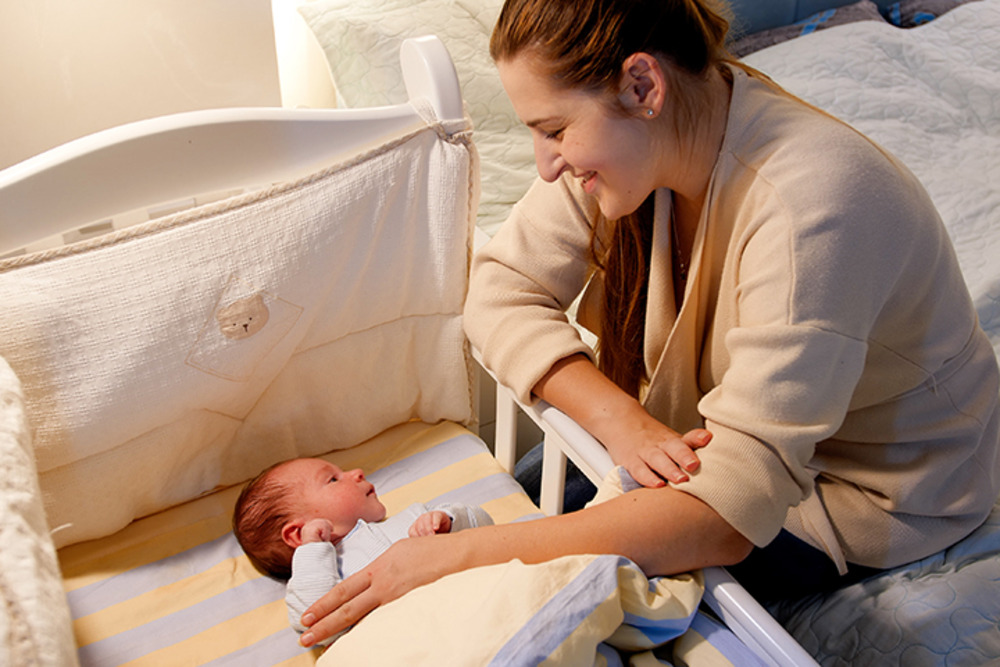
Ensuring a safe sleep environment for your baby is crucial while promoting self-soothing. By following these safety guidelines, you can create a peaceful and secure space for your little one’s restful sleep:
1. Use a Firm and Bare Crib Mattress
- Place your baby to sleep on a firm crib mattress that fits snugly in the crib.
- Avoid using soft bedding, bumper pads, or crib toys as they may pose risks of suffocation or Sudden Infant Death Syndrome (SIDS).
2. Keep the Crib Clear of Hazards
- Remove any pillows, stuffed animals, or loose blankets from the crib.
- These items can potentially cover your baby’s face and obstruct breathing.
- Instead, consider using a wearable blanket or sleep sack to keep them warm.
3. Avoid Overheating
- Dress your baby in appropriate sleep attire and keep the room temperature cool, between 68-72°F (20-22°C).
- Overheating can increase the risk of SIDS.
4. Place the Crib in Your Room
- It is recommended that your baby sleep in the same room as you for the first six months.
- Place their crib or bassinet close to your bed for easy monitoring.
5. Practice Back-to-Sleep Positioning
- Always place your baby on their back to sleep.
- This reduces the risk of SIDS. Avoid placing them on their side or stomach, even if they can roll over.
6. Say No to Bed-Sharing
- Bed-sharing is not recommended as it can lead to accidental suffocation or strangulation.
- Instead, provide a separate and safe sleep space for your baby.
Remember, practicing safe sleep habits not only promotes your baby’s well-being but also facilitates their self-soothing journey. Providing a secure sleep environment allows your little one to develop healthy sleep patterns and find calm on their own.
The Final Note: When Can Babies Self-Soothe To Sleep?
In conclusion, self-soothing is a crucial skill for promoting healthy sleep patterns in babies. By allowing babies to learn how to calm themselves and find comfort, parents can help foster independent sleep habits at an early age. Throughout this article, we have discussed various techniques and strategies to assist babies in self-soothing and achieving restful sleep.
- Creating a consistent bedtime routine is key in establishing a soothing environment and signaling to babies that it’s time to sleep.
- Introducing security objects, such as a favorite stuffed animal or blanket, can provide additional comfort and familiarity.
- It is also important to create a calm sleep environment by keeping the room dark, cool, and free from distractions.
- Establishing regular sleeping times and meeting all of a baby’s needs before tiredness sets in are crucial steps in promoting self-soothing.
- Acknowledging and comforting a baby in the crib without immediately picking them up can encourage them to self-soothe.
By practicing safe sleep habits and following crib safety guidelines, parents can promote self-soothing while ensuring their baby’s well-being.
In summary, by implementing these techniques and providing the right support, parents can gain a clear idea of when can babies self-soothe to sleep and develop healthy self-soothing abilities, resulting in better sleep patterns and overall well-being.
How we reviewed this article
At ParentingVip, we take the utmost care in providing accurate and reliable information to our readers. Therefore, we thoroughly review the information and sources used to compile our articles.
Our goal is to ensure that our content meets the highest standards of quality and integrity, providing valuable insights and guidance.
To review this particular article on when can babies self-soothe to sleep, we conducted extensive research.
- We gathered information from reputable sources, including scientific studies, healthcare professionals, pediatricians, child health nurses, and expert opinions in the field.
- We also consulted longitudinal studies and reviewed the findings to provide evidence-based recommendations.
- Our content team analyzes and cross-references multiple sources to ensure the accuracy and reliability of the information provided.
- We prioritize references from peer-reviewed journals, respected medical organizations, and authoritative websites.
We aim to present a well-rounded perspective on the topic by using a comprehensive approach. While we strive to provide up-to-date information, new research may emerge that could impact the understanding of self-soothing techniques.
We encourage our readers to consult with healthcare professionals or qualified experts for personalized advice and guidance tailored to their specific situation.
By maintaining a rigorous review process, we aim to deliver trustworthy and informative content that empowers parents and caregivers with the knowledge they need to support their baby’s healthy sleep habits.
Remember, promoting self-soothing and healthy sleep habits in babies and understanding when can babies self-soothe to sleep is a gradual process that requires patience and consistency. These articles provide further guidance and support to help you navigate this critical milestone.

